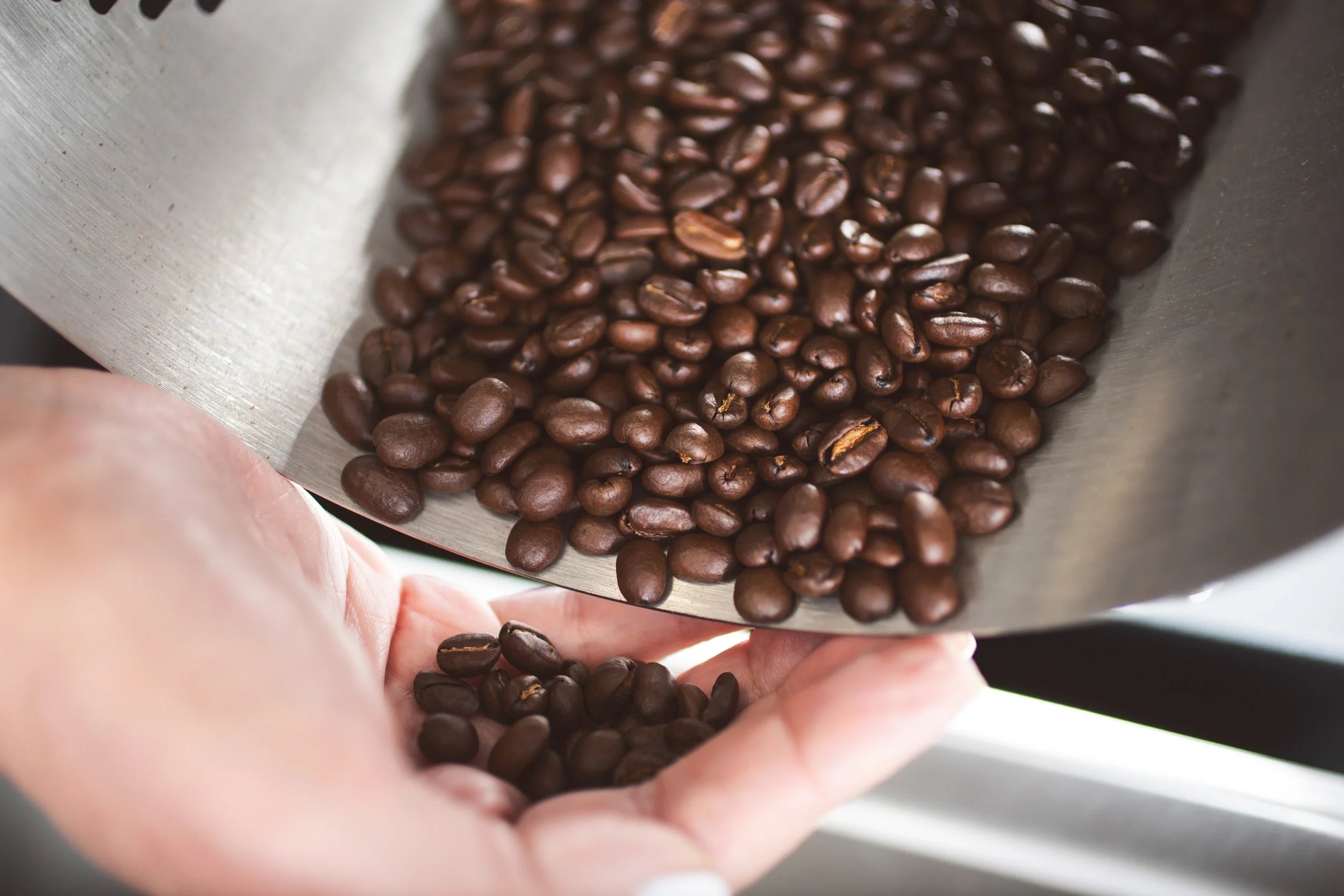Understanding roast date coffee freshness is fundamental to brewing exceptional coffee at home, yet it's one of the most overlooked aspects of the coffee experience. Many coffee lovers focus on origin, processing method, or brewing technique while completely ignoring when their coffee was actually roasted.
At Daily Hug Coffee, we believe that roast date freshness is so important that we include clear roast dates on every bag and roast in order to ensure you get coffee at its absolute peak quality.
The Science Behind Roast Date Coffee Freshness
The science behind roast date coffee freshness involves chemical processes that continue long after roasting is complete. During roasting, coffee beans undergo hundreds of reactions that create the flavors, aromas, and compounds we associate with great coffee.
However, these same compounds are volatile and continue to change after roasting, which is why timing matters so much in coffee freshness.
Immediately after roasting, coffee beans release carbon dioxide in a process called degassing. This degassing is most intense in the first 24 to 48 hours after roasting, which is why freshly roasted coffee often comes in bags with one‑way valves.
The valve allows CO2 to escape while preventing oxygen from entering. Understanding this process helps explain why roast date coffee freshness calculations start from the moment roasting ends, not when you buy or open the coffee.
The Optimal Freshness Window
The ideal freshness window typically falls between 3 to 14 days after roasting for most brewing methods.
-
Days 1–3: High CO2 levels may interfere with brewing, especially espresso.
-
Days 4–10: Best for espresso, producing a stable crema and balanced flavor.
-
Days 3–14: Ideal for pour‑over methods like V60 or Chemex.
-
Up to 3 weeks: French press and immersion methods remain forgiving.
After about 14 days, volatile compounds begin to dissipate, and the coffee starts to taste flat or stale.
How Brewing Methods Affect Freshness
Different brewing methods react differently to roast date freshness:
|
Brewing Method |
Optimal Freshness Window |
Reason |
|
Espresso |
4-10 days post-roast |
Requires precise extraction; CO2 can disrupt crema. |
|
Pour Over |
3-14 days post-roast |
Balanced window for clarity and flavor development. |
|
French Press |
Up to 3 weeks post-roast |
Immersion method is more forgiving of age. |
Air Roasted Coffee and Freshness at Daily Hug Coffee
Our air roasted coffee beans maintain their freshness characteristics slightly longer than traditionally roasted beans. The gentle roasting process preserves more volatile compounds responsible for flavor and aroma.
Even heat distribution and no contact with hot metal surfaces help maintain delicate compounds, extending the optimal freshness window.
Storage and Its Impact on Freshness
Storage significantly impacts roast date coffee freshness. Proper storage can extend brewing quality considerably.
Best storage practices:
-
Store in airtight containers.
-
Keep away from light, heat, and moisture.
-
Avoid oxygen exposure, it causes oxidation, leading to stale flavors.
-
Never store in the refrigerator or freezer unless sealed and unopened for long‑term storage.
Grinding and Freshness Loss
Grinding accelerates the loss of freshness by exposing more surface area to oxygen.
-
Whole beans: Stay fresh longer.
-
Pre‑ground coffee: Begins losing flavor within hours.
Always grind just before brewing. If buying pre‑ground coffee, use it within a few days and store it airtight.
Visual and Sensory Signs of Freshness
You can assess freshness through simple sensory cues:
-
Fresh beans have a subtle oily sheen and a strong aroma.
-
Stale beans look dull, smell dusty or flat, and brew poorly.
Economic and Practical Considerations
Buying from small roasters who prioritize freshness ensures better flavor and value. Grocery‑store coffee may be weeks or months old.
At Daily Hug Coffee, we roast to order and ship quickly, so your coffee always arrives fresh and full of flavor.
Small Batch Roasting Benefits
Batch size directly affects freshness.
-
Large roasters prioritize efficiency, leading to long storage times.
-
Small batch roasters, like Daily Hug Coffee, roast more frequently, ensuring shorter times between roasting and consumption.
Our small batch approach means your coffee spends more time being fresh and less time sitting around.
Seasonal and Temperature Effects
Seasonal variations in green coffee affect roast date coffee freshness. Newly harvested “new crop” beans often rest for weeks or months before roasting to stabilize moisture.
Temperature stability during storage is equally important. Fluctuating temperatures cause expansion and contraction, breaking down structure and accelerating staling.
Consistent, cool temperatures preserve freshness longer than frequent temperature changes.
Frequently Asked Questions
How can I tell if my coffee is still fresh?
Fresh coffee should smell vibrant when you open the bag and produce aromatic grounds when ground. If it smells flat, dusty, or has no aroma, it's likely stale.
What's the best way to store coffee to maintain freshness?
Store whole beans in an airtight container at room temperature, away from light and heat. Never refrigerate or freeze opened coffee.
Is it better to buy smaller amounts of coffee more frequently?
Yes, buying what you can consume within 2–3 weeks ensures continuous freshness rather than storing coffee that goes stale.
Does the roast level affect how long coffee stays fresh?
Darker roasts peak slightly earlier and fade faster than lighter roasts because the extended roasting creates more volatile compounds that dissipate quickly.
Experience True Coffee Freshness
Don't settle for stale coffee from unknown roast dates.
Our air roasted Colombian, Brazilian, House Blend, and Decaf beans are roasted to order and shipped fresh, ensuring you always get coffee at its peak.

0 comments